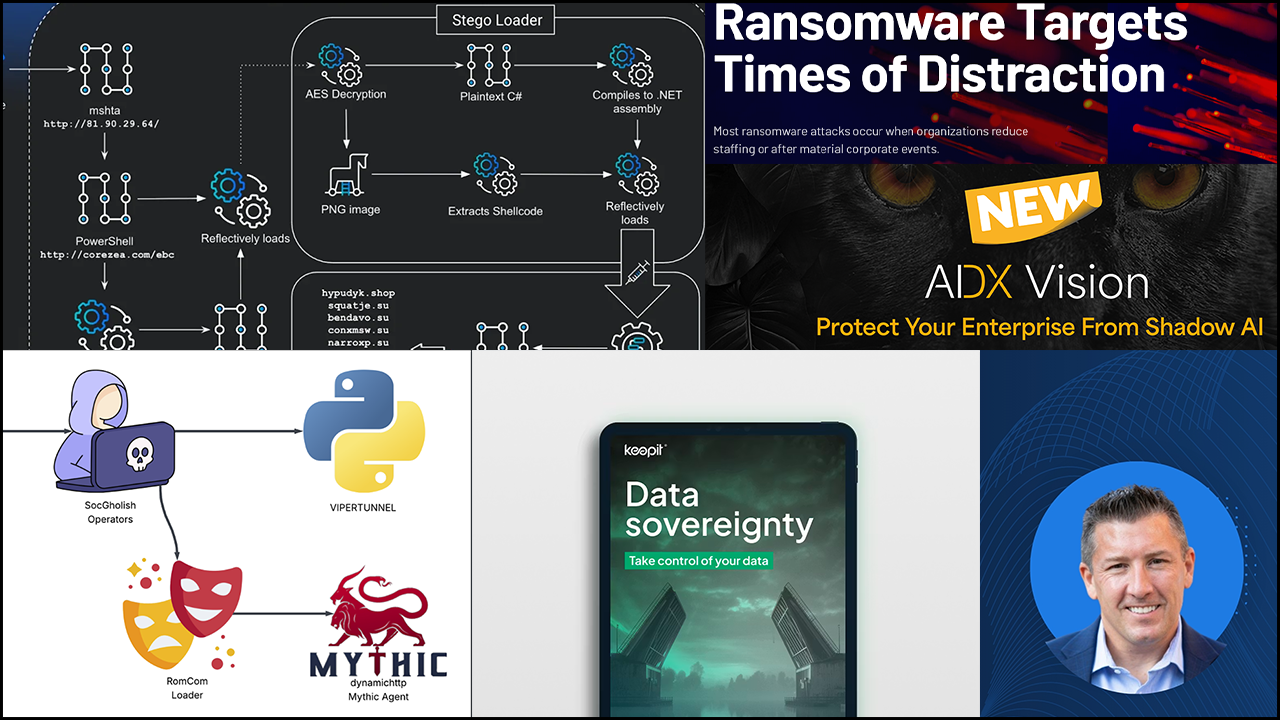NO DOUBT cloud computing delivers transformational capabilities. It allows organizations of all shapes and sizes to operate faster, better, and with lower business and IT costs. In a best-case scenario, it can also unleash innovation and even wholesale disruption at scale.
Yet, managing a vast array of cloud applications and infrastructure is a daunting task. As adoption spikes and clouds drift into the mainstream of the modern organization, channel pros and their clients increasingly recognize that strategies and techniques that worked well a few years ago aren’t always effective today.
“Clouds have evolved and MSPs must evolve with them,” states Malik Khan, CEO of PointClick, a Raleigh, N.C.-based managed service provider that specializes in Microsoft Azure. “We are no longer in a lift-and-shift framework that mimics an on-premises computing environment. People need to rethink the way they manage clouds and the technologies they use.”

Malik Khan
To be sure, today’s software-as-a-service (SaaS), platform-as-a-service (PaaS), and infrastructure-as-a-service (IaaS) frameworks—along with the sprawling multicloud environments they create—deliver both opportunities and challenges for organizations. Optimizing performance, managing costs, streamlining data governance, avoiding vendor lock-in, and addressing cybersecurity risks are all at the center of what constitutes a viable and sustainable cloud strategy.
The Challenges
As businesses turn to cloud computing to handle increasingly complex tasks involving SaaS, IaaS, and PaaS, a more expansive and sophisticated IT management framework with strong governance and security protections is critical. It isn’t unusual for a company—even an SMB—to rely on hundreds of different cloud applications, tools, and resources. “It isn’t only that a business requires different tools; the way they are used is fundamentally different,” says Tracy Woo, a senior analyst for Forrester Research.
These challenges can be exacerbated by mergers and acquisitions and general business expansion. Reviewing contracts, licensing terms, renewal dates, and myriad other factors can rapidly devolve into a quagmire. “It’s remarkably easy to provision resources but it isn’t as easy to manage them effectively,” says Chris Ploessel, president of RedNight Consulting, an Aliso Viejo, Calif.-based MSP that focuses on AWS.
To be sure, cloud management challenges can take many shapes and forms, not the least of which is an overall lack of visibility into users, events, identities, and assets.
Other common issues are:
- Overall complexity
- Technical debt
- Cloud sprawl
- Governance
- Cybersecurity
- Billing
- Shadow IT
- Vendor lock-in
Left unchecked, these factors lead to wasted money and underperforming systems along with higher business risks.

Chris Ploessel
Cloud sprawl is among the most serious of the concerns. It causes problems on a couple of different levels. First, it frequently results in shadow IT. Unauthorized software and systems can trigger higher costs and, if ignored, result in underperforming systems and additional security risks. Second, the sheer volume and expanse of clouds, often coming from various vendors and systems, exponentially ratchets up IT management overhead.
For example, Ploessel says he recently conducted an audit with a client that found an unknown AWS account. It turns out that an employee had spun up the cloud instance a few years ago to experiment with a specific service on a trial basis.
“They weren’t aware the account still existed or why it was there,” notes Ploessel. “The company was paying $1,200 a month for an account they weren’t using. Had we not detected the account it would have likely stayed open for months or even years.”
Such stories are not uncommon. In fact, in some cases, businesses haven’t discovered they have failed to switch off a cloud service until years and hundreds of thousands of dollars later. Of course, as organizations shift more and more infrastructure and services into the cloud the stakes escalate. According to 2023 research conducted by online data site Statistica, about half of all enterprise workloads now reside in the cloud, with 7% of organizations planning to move additional workloads to the cloud in the next 12 months.
Yet, companies are clearly struggling. Gartner reports that through 2024, 60% of infrastructure and operations leaders will face public cloud cost overruns that negatively impact their on-premises budgets. A separate study conducted by cloud vendor Virtana found that 86% of organizations lack visibility across cloud infrastructure and 82% of organizations with workloads running in public clouds have incurred “unnecessary” cloud costs. No less significant: Seventy-two percent struggle with inadequate management tools and 68% wind up with silos that hinder collaboration and performance.
Gaining Visibility
At the root of the cloud management challenge is a lack of universal visibility and a single management framework that makes diagnosing bottlenecks and optimizing assets difficult, if not impossible. In many cases, vendor-specific tools from the likes of AWS, Google, and Microsoft work well within a particular application, system, or platform but lack the capabilities required to address broader and deeper challenges that span multicloud and multivendor environments. This situation ratchets up the challenges related to real-time monitoring, live alerts, and fully understanding resources and configurations.
Identity management and authentication can be a particularly nettlesome area, Kahn says. Oftentimes, organizations lack visibility into who is using cloud resources and how they are connecting to various applications and data, even with single sign-on in place. Although each SaaS vendor and cloud provider has its own set of authentication standards for logging in and managing their software or systems, problems ensue as users move across applications that incorporate different standards and protocols.
For instance, it isn’t enough to know that a user has logged into a cloud-based service with the right credentials. There’s a need to identify where the IP address originates and ensure that the individual is using a known and approved device that meets essential security specifications. What’s more, because of the highly intertwined nature of containers, APIs, and other cloud assets, it’s vital to control access laterally through a network. “These challenges exist in legacy environments, but they are often magnified in the cloud,” Ploessel says.
Cloud management initiatives go off the rails for several reasons, Gartner reports. For one, organizations may try to emulate the on-premises environment in the cloud workload, rather than rewriting code to make applications and tools cloud native. Another issue is failing to properly architect and implement an underlying cloud “landing zone” that addresses performance, costs, security, and compliance. In addition, organizations may overlook indirect project overhead and ancillary costs. Gartner also points out that cloud management requires a realignment of teams and a better understanding of system dependencies.

Carl Mazzanti
For channel pros, all of this is both bad news and good news. More advanced and highly complex cloud infrastructure means that MSPs must constantly upgrade their knowledge and apply different cloud management methodologies than in the Cloud 1.0 world. But the opportunities are significant—and growing. A 2023 State of IT report from Spiceworks and Ziff-Davis points out that managed services spending now accounts for 18% of IT budgets, up from 15% in 2020.
Says Carl Mazzanti, CEO of eMazzanti Technologies, a Hoboken, N.J.-based MSP: “Channel pros can play a crucial role in guiding companies toward improved decision making and better cloud management frameworks. But they have to know their stuff and help customers unlock the value.”
Focusing on Optimization
Guiding clients through the labyrinth of decisions and choices—and arriving at better governance and a more elegant cloud management framework—is all about a focus on cloud optimization. Kahn says that a starting point for MSPs is to recognize that a cloud 2.0 strategy must address techniques, tools, and processes that revolve around analyzing, monitoring, and continually adjusting to a highly dynamic and fast-changing IT and business environment.
A combination of methodology and tools is at the center of success. For instance, a valuable resource for establishing and overseeing a cloud management framework is a fairly detailed onboarding questionnaire, Kahn says. “It’s important to understand in a detailed way what a company is doing, where it is going, and what challenges it is facing.” What’s more, he adds, “A survey isn’t merely a tool for getting things right; it’s an opportunity for an MSP to establish a more strategic consulting role and even upsell products and services.”
Kahn also conducts quarterly business reviews that are designed to gauge whether the client is drifting away from a core cloud strategy.
Mazzanti engages in a similar tact, relying on what he describes as “a multidimensional audit process.” Combined with a dashboard and tools that monitor and analyze cloud resources—typically a mix of cloud vendor software and tools from third-party providers—he can achieve a level of visibility that leads to good decision making.
For his part, Ploessel likes to use a dashboard to track as many as 50 to 100 key performance factors that directly map to cloud performance.
Using these methods, it’s possible to identify situations where a company isn’t utilizing resources efficiently—or when it is buying licenses that it doesn’t need. “There are many cases where it’s possible to change, consolidate, or redesign cloud resources to produce more effective results and outcomes,” Khan points out. For example, an organization can dial up and dial down virtual machines dynamically, and spot situations where utilization and licensing are off-kilter. In one case, Ploessel says, “We saved a company $60,000 annually because they had premium licenses that weren’t necessary.”
Another valuable tool, Kahn says, is a basic monitoring system that generates alerts when a client begins deviating from past cloud usage. “If we have a customer that spends $4,000 a month, we can establish a 70% or 80% threshold for an alert,” he explains. “If we receive a notification halfway through the billing cycle that the customer has reached this level of resource consumption, we can create a ticket, investigate the matter, and approach a solution in a more proactive and cost-effective way.”
A good relationship with cloud vendors is also critical, Mazzanti says. If a larger player won’t devote time and resources to a business, it’s wise to explore smaller or niche cloud providers. “You have to identify vendors that are willing to pay attention to you and take an active interest in your business,” he stresses. “Once you commit to a company it’s often extremely difficult to change cloud providers, whether or not you want to describe it as vendor lock-in.”
In some cases, forging strong relationships with distributors and third-party support providers such as ServiceNow or Ingram Micro can also pay dividends for MSPs. That’s because major cloud companies often establish strict revenue thresholds, and if an MSP doesn’t hit the sales figure the company either won’t support them or winds up delivering subpar support. Ploessel believes that a lack of commitment to support—either by the MSP or the cloud vendor—will almost certainly torpedo any chance for a long-term relationship. “You have to ask, ‘What happens in an emergency?’ and begin building a support framework around that possibility.”
Unlocking Value
One way for channel pros to elevate their cloud management practices and distinguish themselves is through a dedicated cloud management platform (CMP). Although cloud vendors typically offer tools that work well within their own platforms, a CMP may bundle a variety of tools, technologies, and processes designed to handle far-ranging tasks such as managing settings, tracking licenses, overseeing billing, automating changes, addressing lifecycle management, and boosting security, governance, and compliance. A CMP also makes it possible to improve forecasting and cost controls.
Examples of CMPs include CloudCheckr (now part of Spot by NetApp), Flexera, Nerdio Manager for MSP, Morpheus, Oomnitza, and the open source tool CloudStack. With an enhanced ability to scan and analyze resources across an organization, an MSP can emerge as a valuable strategic consulting resource.
To be sure, when channel pros help their clients tame the complexities of the cloud and maximize results from today’s information technology, good outcomes usually follow. Says Mazzanti: “Many SMBs recognize that they require outside expertise to unlock the full value of clouds. MSPs must recognize that the partners they establish and the knowledge frameworks they build serve as the foundation for their customer’s success.”
Image: iStock / TCmake_photo













